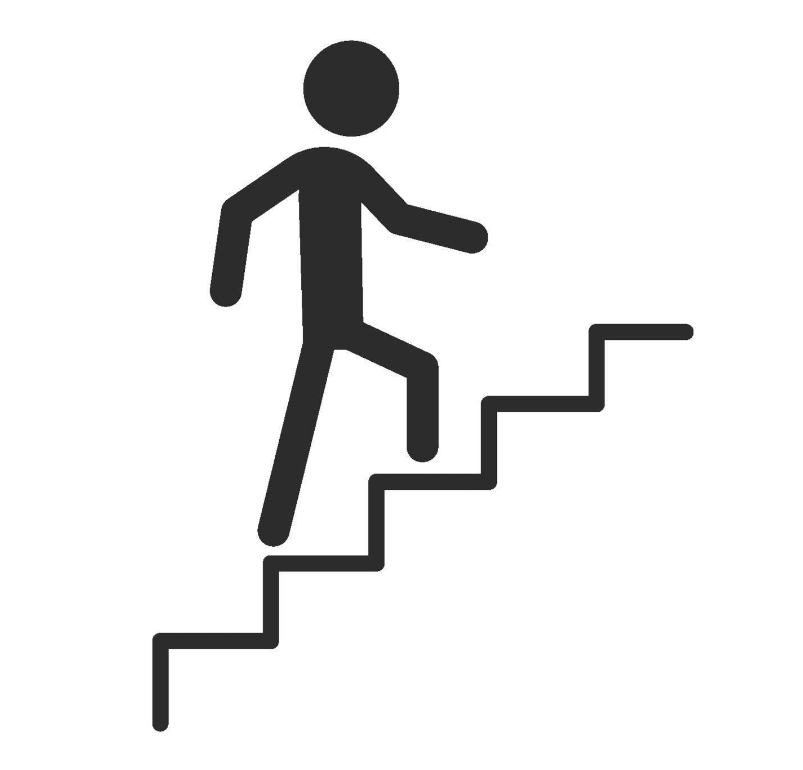In situations where exercise time is insufficient,
I strongly recommend stair walking work out in daily life.
Stair walking is a type of physical activity that involves walking up and down a flight of stairs repeatedly. It is a simple and effective way to improve cardiovascular fitness, strengthen leg muscles, and burn calories.
Stair walking can be performed in a variety of settings, such as at home, in a building, or at a stadium. The number of stairs climbed and the speed at which they are climbed can be adjusted to meet individual fitness levels.
Benefits of stair walking include bellow :
1. Cardiovascular fitness
Stair walking is an excellent cardiovascular exercise that can improve heart health and lung capacity.
2. Leg strength
Stair walking strengthens the muscles in the legs, including the quadriceps, hamstrings, and glutes.
3. Weight loss
Stair walking burns calories and can aid in weight loss efforts.
4. Improved balance and coordination
Regular stair walking can improve balance and coordination, which can reduce the risk of falls and injuries.
When performing stair walking, it is important to wear comfortable and supportive footwear, start with a warm-up, and gradually increase the intensity and duration of the exercise over time. It is also important to consult with a healthcare professional before starting any new exercise routine, especially if you have any underlying health conditions or injuries.
계단 걷기 운동의 이점
1 .심혈관 개선 : 계단 걷기는 심장 건강과 폐활량을 향상시킬 수 있는 훌륭한 심혈관 운동이다.
2. 다리 근육 강화 : 계단 걷기는 사두근, 햄스트링, 그리고 글루텐을 포함한 다리의 근육을 강화시킨다.
3. 체중 감량 : 계단을 걷는 것은 칼로리를 소모하고 체중 감량 노력에 도움을 줄 수 있다.
4. 신체 균형 및 조정력 개선 : 규칙적인 계단 걷기는 신체 균형과 조정력을 향상시켜 넘어지거나 부상을 입을 위험을 줄일 수 있다.
계단걷기를 할 때는 편안하고 힘이 되는 신발을 신는 것이 중요하며 준비운동부터 시작해 시간이 지남에 따라 운동의 강도와 지속시간을 점차 늘려가는 것이 중요하다.
One more thing!
Stair walking can be a safe and effective exercise, but it's important to take necessary precautions to ensure your safety. Here are some tips for staying careful during stair walking.
Wear appropriate shoes: Wear shoes that provide good traction and support to prevent slipping or falling.
Take it slow: Begin by walking slowly up and down the stairs to get accustomed to the activity. Gradually increase your pace and the number of stairs climbed as your fitness level improves.
Pay attention: Keep your eyes focused on the stairs and watch your step to avoid tripping or missing a step.
Use the handrail: Hold onto the handrail when going up and down the stairs to provide extra support and stability.
Avoid distractions: Don't use your phone or other devices while stair walking as it can be distracting and increase the risk of an accident.
Don't overdo it: Start with a small number of stairs and gradually increase the intensity and duration of the exercise over time. Listen to your body and stop if you feel any pain or discomfort.
Be aware of your surroundings: If you're stair walking in a public space, be aware of other people using the stairs and be courteous by allowing them to pass if necessary.
Remember to consult with a healthcare professional before starting any new exercise routine, especially if you have any underlying health conditions or injuries.
[Picture source : vecteezy.com]
